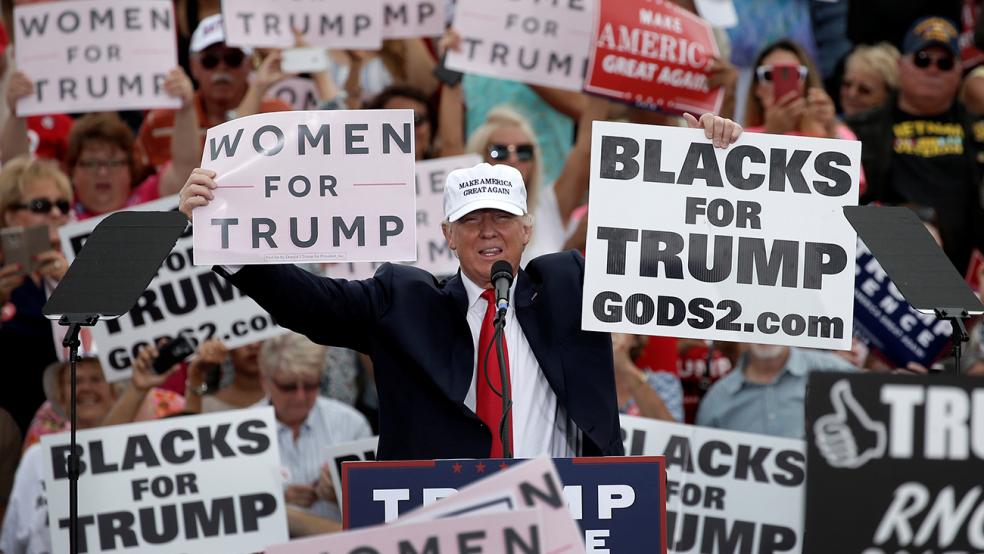The latest polling in the presidential election seems so scrambled that it’s easy to imagine that the race -- and voters’ perception of it -- is a complete mess. The ABC News/Washington Post tracking poll, which had Democrat Hillary Clinton leading Republican Donald Trump by 12 points a little over a week ago, has swung so wildly that Trump is now boasting that he owns a 1-point lead. Meanwhile, the NBC News/Wall Street Journal poll, taken over the same period, went from Clinton up by six points to Clinton up by seven.
It’s enough to give the casual poll watcher whiplash, but for people who follow polls for a living the numbers aren’t actually all that surprising. While there is a clear trend in Trump’s favor over the past week, the real-world change in voter preferences probably hasn’t been a dramatic as polls like the ABC/Post poll suggest.
Related: An Algorithm With a Solid Track Record Is Predicting a Trump Win
“I don’t think the race is that disordered,” said Sean Trende, the senior elections analyst at Real Clear Politics. Partly, he said, the perception of volatility is a function of people not understanding how polls work.
“These polls come with error margins and I think people dismiss them, but they’re real, and they attach to each candidate.”
For argument’s sake, imagine that among all voters, Clinton was actually up by six points when ABC News/ Washington Post poll was released on October 23 showing her with a lead of 50-38. The margin of error for each candidate’s result was three percentage points. That means that the pollsters are statistically confident that Clinton’s tally fell between 47 points and 53 points, while Trump’s was between 35 points and 41 points.
That meant that the reported results, even though they didn’t look like it to an untrained observer, were consistent with a 6-point Clinton lead.
Later iterations of the poll, taken before the most recent news about Clinton’s email scandal broke, showed a considerably smaller Clinton lead. “They probably drew a couple of big Clinton samples one day or two days,” Trende explained, resulting in a result at the “high end of the error margin.”
Related: This Election Proves Our Two-Party System Has Failed. Here’s How We Fix It
Since then, two major things have been happening. Clinton had suffered a moderate loss of support over the past week in several polls, apparently due in part to the email revelations. At the same time, Trump has benefited from undecided voters breaking his way.
The most recent iteration of the ABC News/Washington Post poll shows Clinton trailing Trump 46 to 45. Again, taking the error margins into account, this could represent a race that has changed, but not nearly as much as the 13-point, week-over-week swing might make you think.
“We’ve kind of been spoiled the last couple of elections, because everything has been pretty stable,” said Trende. Poll numbers haven’t fluctuated wildly down the stretch, in large part because there haven’t been too many undecided voters left. However, this contest, featuring two of the most unpopular candidates ever to run for the Oval Office, has kept many voters on the sidelines until the last minute.
But historically, significant swings at the end of an election aren’t unheard of. “There was obviously pretty substantial movement toward Bob Dole at the end of 1996,” said Trende. “And there was a move toward Al Gore at the end of 2000.”
Related: The Big Problem With Peter Thiel’s Defense of Donald Trump
Another reason that veteran polling analysts aren’t especially agitated right now is that they are careful to look at lots of data and to consider it in the aggregate.
On Tuesday, forecaster Nate Silver, who founded FiveThirtyEight.com tweeted out this reminder: “Our model forecasts the popular vote as Clinton 49.2, Trump 44.7. What if we removed the ABC/Post poll entirely? Clinton 49.3, Trump 44.5.”





